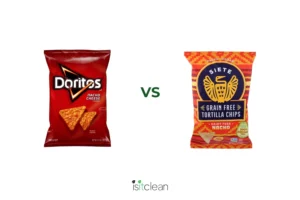
Acesulfame potassium is a zero-calorie sweetener that is added to many sugar-free…



Disodium inosinate is a food additive that is used to enhance the flavor of various processed foods. It is commonly listed on ingredient labels as E631. Disodium inosinate is typically derived from a natural source, such as dried fish or meat, where it occurs naturally in small amounts. However, due to the relatively limited availability of these natural sources, commercial production involves a fermentation process using bacterial cultures, primarily the bacterium Bacillus subtilis. It is commonly used alongside MSG to enhance snacks, soups, sauces, and other food products with an umami flavor.

While disodium inosinate can be derived from a natural source, it is present naturally in very small amounts unlike the amounts used to enhance foods. It is commonly found alongside MSG (rated red) or disodium guanylate and in highly processed foods. There is no evidence suggesting it to be toxic or carcinogenic in animals, but human research is lacking.
Health is like a bank account, certain ingredients make a deposit into your health bank, meaning they add to
your health. Certain ingredients withdraw from your health bank. We want health promoting ingredients in our diet. To keep things simple, we rate ingredients on a green, yellow, red scale:

It is naturally occurring in food and has no harmful effects on the body. It is real food. It is health promoting.

It goes into one or more of the below categories

It is known to have a harmful effect on the body (ex. All food colorings, Natural Flavors, MSG, Potassium bromate, aspartame, artificial flavors)



The Food Showdown: Popcorners flavors
Ingredient Rating: Canola oil – is it bad for you?
Clean Consuming: Nourishment for your

We have accomplished so much in just 1 year since our launch in March of 2023! We now have 10,000

The Nacho Chip Food Showdown, is Tapioca Starch safe in food? and a must-see documentary on America’s food system.
Stay in the know with the latest ratings, articles, and our newsletter, The Dirt.